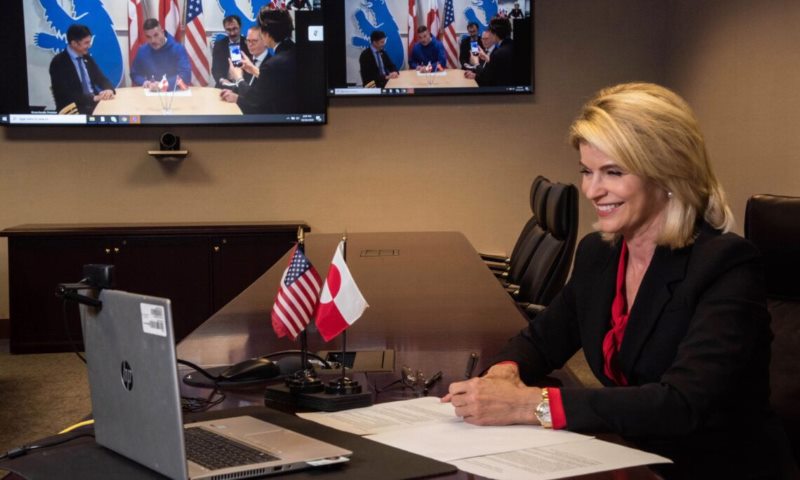World
U.S. Delegation’s Greenland Visit Backfires Amid Tensions
U.S. Delegation’s Greenland visit: For more than 150 years, U.S. officials, including Trump, have tried to acquire Greenland. The idea arose in 1860. It resurfaced before and after the two world wars, but Greenlanders are reconsidering. They seek independence from Danish control because of their painful colonial past.
Trump’s Disastrous Visit
President Trump’s decision to send a powerful U.S. delegation to Greenland, seemingly uninvited, sparked backlash. The delegation, including Usha Vance and National Security Advisor Michael Waltz, aimed to be a diplomatic gesture. However, Trump’s remark, “one way or the other, we’re going to get it,” alienated Greenlanders. This comment intensified tensions and angered local communities.
Greenland Criticizes U.S. Actions
In a rare move, Greenland’s government has abandoned its typical reserved stance and criticized Trump’s visit as “aggressive.” Seeking support from Europe, Greenland has voiced its opposition to the U.S. approach. Instead of fostering goodwill, the visit may strengthen ties between Greenland and Denmark.
A Shift in Public Opinion
Political analyst Lars Trier Mogensen suggests the visit will drive Greenland further from the U.S. than ever before. “Greenlandic factions were open to deeper collaboration with America just a year ago,” Mogensen stated. Now, Greenlanders may lean towards securing their future within Denmark’s sphere, particularly in the face of Trump’s tactics.
Disinterest at the Dogsled Race
Even the dogsled race that Vance attended failed to generate enthusiasm. The organizers of the Avannaata Qimussersua race clarified they did not invite the delegation, although the event was open to the public. This gesture underscored the lack of warm reception to the U.S. visit.
The History of U.S. Interest in Greenland
The U.S. has long been interested in Greenland for its strategic importance. In 1868, Secretary of State William Seward studied acquiring Greenland, inspired by the success of the Alaska purchase. Despite reviving this idea in the 20th century, Denmark rejected the proposal every time.

Poilievre and Carney Compete on Income Tax Cuts Ahead of Election
Poilievre and Carney: Canadian Conservative Leader Pierre Poilievre is promising a more substantial income tax cut than Liberal Leader Mark Carney…
Greenland’s Growing Independence Movement
Greenland’s push for independence gained momentum in recent years. Since gaining limited self-rule in 2009, Greenland’s political landscape has evolved. While some factions favor gradual independence, others support immediate separation from Denmark, with some aligning with pro-Trump sentiments.
The Timing of the Visit
The timing of the U.S. visit, while Greenland negotiates its new government, has only added to tensions. “It’s poor timing. We don’t even have a new government yet,” remarked Jens Peter Lange, a Greenlandic resident. While not seen as disrespectful, the visit was viewed as a lack of situational awareness.
Trump’s Visit Becomes Geopolitical
Svend Hardenberg, a mining executive, believes the cultural visit has become politicized. He stated, “This was meant as a celebration, but it’s turned into a geopolitical conflict.” Danish media’s influence has amplified distrust in the U.S. Public opinion has been shaped by this media coverage.
Ongoing Efforts to Strengthen U.S.-Greenland Ties
Jørgen Boassen, a Greenlandic bricklayer and Trump supporter, remains optimistic about U.S.-Greenland relations. Despite the backlash, he insists that Greenland should collaborate with the U.S. instead of rejecting them. “We simply cannot avoid the U.S. as a partner,” he stated.


